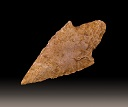This article discusses the physics of archery, from fundamental principles to more advanced experiments and mathematical formula.

archeryhistorian.com
Physics of Bow Efficiency: Hysteresis
Hysteresis is a term in physics and engineering which refers to the unrecoverable loss of energy in a system. This energy may escape a mechanism such as a bow through heat, resistance with the air, internal friction, recoil, etc. Substracting these losses from the measurement of stored energy as done in a force-draw calculation/diagram, we can get a better idea of the efficiency of a bow.
(It may not be the most accurate definition of the word Hysteresis, but it is a good definition to help to understand where the loss of energy comes from.)
I remember years ago, reading all the Bowhunting world magazine bow reports by Norb Mullaney and he would always test the hysteresis of a bow and calculate the bow's efficiency.



